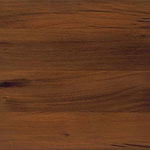Serving Upstate NY—VT—MA • For selections & prices, CALL or EMAIL US
African Ebony
Wood Flooring Species
Scientific Name:
Diospyros spp.
Other Names and Species:
Kanran
Kukuo (Gambia)
Mgiriti
Msindi (Tanzania)
Nyareti (Nigeria)
Omenowa (Ghana)
Origin:
Equatorial West Africa. This species is not to be confused with Brazilian Ebony (Swartzia tomentosa), which comes from South America.
Appearance:
When freshly cut, the sapwood of African ebony is pink-colored, but darkens to a pale red brown; whereas the heartwood shows a uniform jet-black or black-brown color, sometimes with streaks. Ebony has a very fine texture, with the grain ranging from straight to slightly interlocked, or even moderately curly. The luster of this wood may have an almost metallic appearance.
Properties:
An attractive and popular wood with many decorative uses, ebony is notably hard, heavy, and strong, and also very resistant to termite attack.
Janka Hardness: 3220
Ebony is an incredibly hard and durable wood flooring choice. It is over two-thirds harder than merbau, roughly one hundred and twenty-two percent harder than hard maple, over ninety-seven percent harder than wenge, and just over forty-six percent harder than santos mahogany’s ranking of 2200.
Workability:
This highly durable wood is difficult to work with either machine or hand tools, due to its extreme hardness; and, as any contractor or builder can tell you, it has a pronounced dulling effect on tool edges. It usually requires pre-drilling to nail or screw. However, it finishes to a naturally dark and polished surface. Note that prolonged exposure to ebony sawdust may cause dermatitis.
Principal Uses:
Besides being used in hardwood flooring and inlaid work, ebony can be found in piano keys and other musical instruments, cutlery and tool handles, decorative carvings, and turnery.





